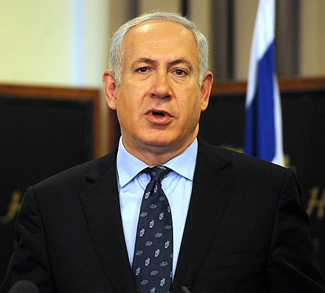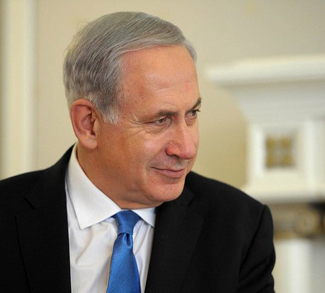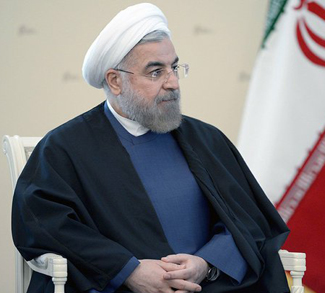On October 1, Iran launched 180 ballistic missiles at Israel, marking its second direct strike in just six months. The attack, dubbed Operation True Promise 2, comes at a time when Iran’s regional influence and deterrence strategy are being severely tested by Israel’s military actions. For Iran, the missile strike was more than just retaliation – it was an attempt to reassert its strength in the face of mounting losses. But this decision also highlighted the serious challenges Iran faces in maintaining its defense posture in an increasingly hostile environment, and as Iran’s conventional deterrence capacity erodes, the odds of a nuclear outbreak increase.
Iran’s regional interests face unprecedented challenges
Iran’s influence in the Middle East has typically rested on two main pillars: its vast missile arsenal and its network of proxy forces, particularly Hezbollah in Lebanon. The approach allowed Tehran to project power beyond its borders without engaging in direct confrontations. By supporting and arming groups like Hezbollah, Iran also aimed to deter adversaries like Israel from harming its interests; thus, the “Axis of Resistance” is a key part of Iran’s grand strategy.
But over the past year, this strategy has come under intense pressure. Israel has ramped up its attacks, targeting key Iranian allies and military figures. High-profile assassinations, including those of Hezbollah leader Hassan Nasrallah and Hamas political leader Ismail Haniyeh, combined with strikes on Iranian commanders, have eroded Iran’s ability to rely on its proxies. Hezbollah, once a cornerstone of Iran’s regional power, has seen its leadership almost entirely wiped out, its communications networks shattered, and its military capabilities diminished.
Faced with mounting setbacks, Iran now finds itself in a tough spot. Its proxies are no longer as effective in countering Israeli initiatives, and its deterrence capabilities are slipping. In this context, the missile strike on October 1 was a high-stakes gamble, aimed at showing that Iran still had the capabilities and the willingness to strike back.
Why Iran risked the missile strike
Iran’s decision to launch Operation True Promise 2 likely stemmed from a recognition that confrontation with Israel was becoming unavoidable. Over the years, Israeli covert operations – including assassinations, sabotage of military sites, and direct attacks – have inflicted mounting losses on Iran. However, the scale pales in comparison to what followed October 7, 2023, where Israel has pummeled Iran’s regional networks. The escalation has been met with only a limited response from Iran, which has consistently tried to avoid an all-out war. Yet events have reached the point where Iranian leaders likely feel that they must make a show of strength in the face of their main rival, necessitating the missile strike while the window of opportunity remained open.
In launching the large-scale missile attack, Iran hoped to force Israel to pause and reconsider its course of action. Tehran may have also been trying to buy time for Hezbollah and other proxy forces to regroup after suffering such heavy losses. Yet the strikes thus far have not had their intended effect; moreover, the decision came with serious risks. Iran has always understood that it lacks the upper hand on military clashes with Israel, a country with advanced air defenses, the only nuclear arsenal in the Middle East, and the beneficiary of ongoing support from the United States.
Fading deterrence exposed
While Iran’s missile arsenal is formidable, it hasn’t been enough to alter Israel’s strategy. During the April attack, Israel’s sophisticated air defense systems, supported by key allies, intercepted the vast majority of missiles, minimizing the damage, though the Iranian assault had been anticipated and was not as intense as it could have been. Meanwhile, Iran’s air defenses are less advanced than Israel’s, leaving it more vulnerable to retaliation.
The October attack was a somewhat different matter. Iran gave only a few hours’ notice of the attack and used ballistic missiles exclusively, which were relatively successful in penetrating Israel’s anti-ballistic missile defense systems and hitting military targets, although again the damage was minimal. Furthermore, Israel’s preparedness allowed civilians to get into shelters, resulting in no Israeli casualties.
Both instances have left a lasting impression of the limitations of Iran’s ability to penetrate Israel’s defenses and cause significant damage, even though the full extent of Iran’s military might yet to be seen.
At the same time, the weakening of Hezbollah has further undercut Iran’s defense posture. Once Iran’s most powerful proxy force, Hezbollah has been crippled by Israeli strikes, which have taken a significant toll on its leadership and military infrastructure. Without Hezbollah at full strength, Iran’s deterrence is significantly eroded, especially as other Iranian proxies, like those in Iraq, Yemen, and Gaza, lack the firepower and positioning to fill the gap left by Hezbollah’s decline.
Iran’s nuclear option
Iran thus finds itself in a difficult position. Its main tools of deterrence – missiles and proxy forces – are faltering, and lacking a clear military advantage, Tehran’s ability to sustain its forward defense strategy is diminishing. The missile strike on October 1 may have delayed additional Israeli actions for now, but it hasn’t changed the underlying imbalance in power relations.
Iran may increasingly look to its nuclear program as a way to counterbalance this imbalance. As a threshold nuclear state, Iran has the capacity to develop nuclear weapons, though it has not yet made the decision to do so. Nevertheless, the diminishing strength of its missile and proxy-based defenses may push Iranian leaders to reconsider.
Iran has long claimed that its nuclear program is for peaceful purposes, but recent debates within the country suggest that some officials are advocating for a more assertive nuclear posture. By signaling its willingness to leverage its nuclear potential, Iran is likely aiming to deter future Israeli aggression and prevent the current conflict from escalating further. Moreover, there could be some posturing involved here: while pivoting toward full nuclear weaponization is a risky strategy in itself as it could trigger preemptive strikes from Israel or the United States, simply hinting at the possibility might force Israel and its allies to take a step back.
That said, pursuing the nuclear option comes with other risks. Developing nuclear weapons takes time, and Iran’s ongoing economic struggles make sustaining a nuclear program a daunting prospect. Still, as Tehran’s conventional deterrence weakens, the nuclear option may become a more attractive choice for Tehran, especially if it can count on the support of Russia, China, and/or North Korea.
Whatever path Tehran opts for, amid the volatile geopolitics of the region, Iran faces some tough choices. Further escalation could provoke devastating retaliation, while restraint risks conceding escalation dominance and potentially regional hegemony to Israel. Ultimately, Iran’s future will depend on how well it can adapt to these changing dynamics and whether it can find new ways to project power in an increasingly challenging landscape.
The views expressed in this article belong to the author(s) alone and do not necessarily reflect those of Geopoliticalmonitor.com.




